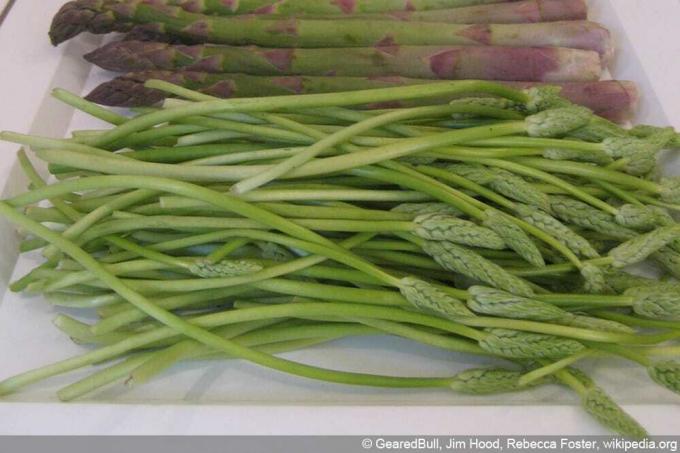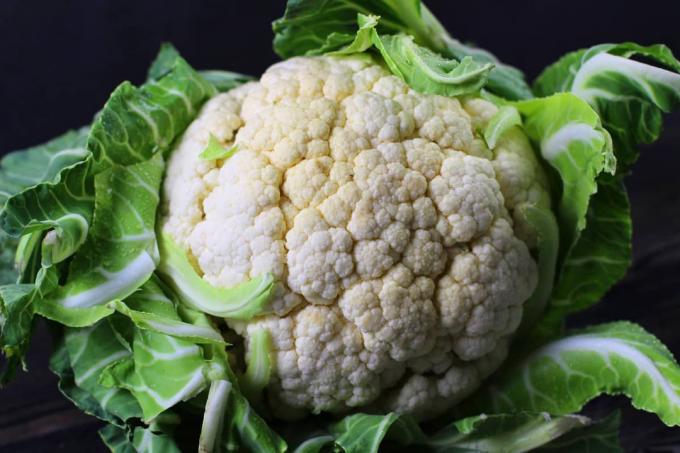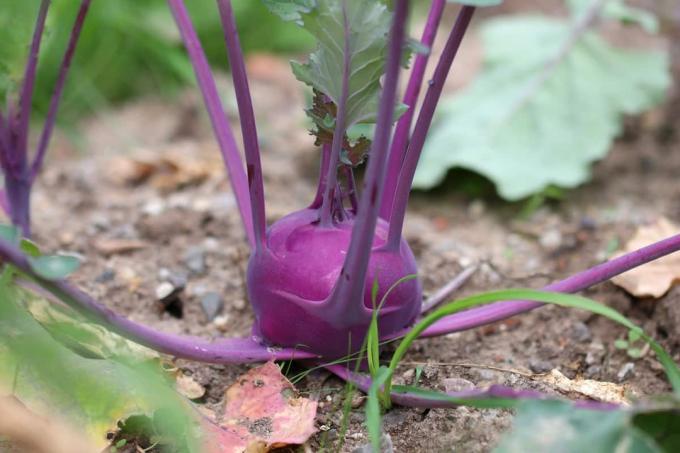

Table of contents
- Wild asparagus is often not asparagus at all
- Pyrenean Milk Star (Ornithogalum pyrenaicum)
- Wild Hop / Common Hop (Humulus lupulus)
- Goat's Beard (Aruncus dioicus syn. silvestris)
- Wild asparagus from Istria
- Green asparagus in the home garden
- How to cultivate healthy green asparagus
- Create ideal growing conditions
- Plant green asparagus in early spring
- How many rootstocks should you plant?
- Caring for green asparagus properly
- Common diseases and pests
- Harvest green asparagus
- Conclusion
Istria is a very densely wooded region in Croatia, where wild vegetables, also known as green or forest asparagus, grow very luxuriantly. Every year between March and May, thousands of Croatians head into the forests to collect and pick, even entire festivals are dedicated to the delicacy. Green asparagus has also been cultivated for thousands of years. The Romans are said to have brought the vegetables across the Alps. Green asparagus is easier to cultivate than the better-known white asparagus, although it is the same species, the vegetable asparagus (Asparagus officialis).
Wild asparagus is often not asparagus at all
If you come across "wild asparagus" or "forest asparagus" at a weekly market, it is usually not about the green asparagus from Istria - but the young sprouts of the Pyrenean milk star (Ornithogalum pyrenaicum). This is mostly imported from France and can be prepared in a similar way to real asparagus. In addition to the Pyrenean milk star, which has recently been added to the botanical family of asparagus, the young shoots of wild hops and goat's beard are also served.
Pyrenean Milk Star (Ornithogalum pyrenaicum)

The Pyrenean milk star originally comes – as the name suggests – from the sparse forests of the Pyrenees, a mountain range between Spain and France. However, it also occurs wild in some parts of the Alps. It is a Mediterranean plant that can usually be grown in our country, but is not hardy. The plant is propagated by bulbs or seeds, which you can obtain from specialist retailers. Place the Pyrenean Milk Star in a bright but not directly sunny spot. Normal garden soil is ideal, but it must be lime-free. You can use the young shoots before flowering as wild asparagus.
Wild Hop / Common Hop (Humulus lupulus)

Most people should know that hops are essential for brewing beer. On the other hand, it is less common that the tender young shoots of this wild plant, which is very common in our country, can also be used as a vegetable. The "wild asparagus", also known as real or ordinary hops, can be collected continuously between April and July. You can find it on embankments and forest edges, where it climbs up trees and other shrubs and can grow up to six meters high. However, only the young hop shoots, which are up to 15 centimeters long, are used. Caution: When collecting, there is a risk of confusion with overgrown vines and poisonous bryony.
Goat's Beard (Aruncus dioicus syn. silvestris)
The young shoots of the wild goat's beard, which is widespread in Central Europe, can also be eaten as "wild asparagus", although of course this is not an asparagus plant either. The herbaceous, very decorative flowering plant can no longer only be found in forests, but also in many gardens. It is considered to be very easy to care for and undemanding. In the spring, sprouts that are a maximum of 10 to 15 centimeters long are harvested, which are pricked like asparagus. However, only use shoots on which the leaves have not yet opened - otherwise they will taste woody and, due to the higher hydrocyanic acid content, bitter. In earlier times, the young sprouts of the forest goat's beard were considered the "asparagus of the poor".
Wild asparagus from Istria
– A whole region celebrates the green forest asparagus –
Green asparagus, which often grows wild in southern Europe in sparse forests, is a real vegetable asparagus. In common with the other "wild asparagus", however, this one has the fact that only the shoot is actually eaten here. In summer, the herb of the green asparagus shoots up. In Istria in particular, forest asparagus is part of the local culture. In the harvest period between March and May, real asparagus festivals take place in many places. While in Germany asparagus is traditionally served with ham, potatoes and hollandaise sauce, Croatians like it aromatic sticks, preferably as an omelette, in soup or risotto or as a delicious side dish with meat and fish dishes.
Green asparagus in the home garden
Like the white asparagus, the green asparagus is a perennial plant that requires a fixed bed area for a single spring harvest all year round. Asparagus needs a lot of space, patience and good growing conditions. A culture in pots or tubs is not possible due to the large amount of space required. The ideal asparagus bed contains good, nutrient-rich soil and is absolutely weed-free. If the conditions are right, however, the green asparagus will deliver its shoots for at least ten years - often even up to 20 years. To do this, however, you must weed the bed regularly and cover it with mulch in the spring.
How to cultivate healthy green asparagus
If you want to cultivate asparagus - whether white or green - you need a lot of patience. In the first year after planting, you may not harvest a single sprout and in the second year, depending on the variety, at most a few sprouts. On the other hand, the workload is quite high in the first few years. However, the effort is well worth it, because in the years that follow, the plants pay back the persistent effort with compound interest. You can expect a period of around three years from planting to the first harvest - unless you have sown the asparagus, in which case you will have to wait another year.
Create ideal growing conditions
Like all asparagus, the forest asparagus also needs very well-drained, nutrient-rich soil. This should be as sandy as possible, slightly moist – and free of limescale. In a garden with heavy, loamy soil, the planted rootstocks don't stand a chance. In such cases, the only option is a raised bed with specially mixed soil, which should contain a lot of compost. In the bed, too, a lot of manure or mature compost should be placed in the designated planting area in the previous autumn. Work the fertilizer in carefully and then let the soil rest until spring.
Plant green asparagus in early spring

Green asparagus can be sown, but this extends the waiting time until the first harvest. It is better to get early root pieces from a specialist shop, the so-called claws, which should be delivered in April and planted straight away. Subsequent plantings are no longer successful. Soak the rhizomes in lukewarm water for about an hour before planting out. And this is how it is planted:
- Loosen the garden soil well
- If necessary, add some mature compost
- Dig planting trenches 25 centimeters deep and 50 centimeters wide
- Planting distance is 50 centimeters
- Row spacing also 50 centimeters
- Use rhizomes with roots spread out on all sides
- and approx. Cover 10 centimeters high with a mixture of soil and compost
In contrast to the white asparagus, however, the green asparagus does not have to be piled up, which makes it much easier to cultivate.
Tip:
If you place garden fleece over the planted root pieces, you can plant even earlier - then you can even harvest later, from April. But be careful: the asparagus spears can freeze to death when late frosts set in. So always make sure you have good antifreeze!
How many rootstocks should you plant?
Between 10 and 12 stalks will grow from each rootstock during a harvest period. For a family of four, calculate with at least 12 rootstocks, for which you need a four meter long row or a 1 x 2 meter bed.
Caring for green asparagus properly
In the first year of cultivation, the rhizomes must not dry out. Therefore, you should water them regularly, especially when it is dry. In addition, emerging weeds should be weeded. The asparagus weed, which appears quite sparse in the first year, is only cut off before winter and disposed of in the compost. The soil is mulched every spring. It also doesn't hurt to use sticks to protect the mature green plants from breaking in the wind. In the second year after planting, the green asparagus is generously fertilized with manure or compost at the beginning of spring. Harvesting, on the other hand, is not yet taking place in order not to deprive the plants of energy.
Common diseases and pests

Like any other plant, the forest asparagus can also have problems with certain pests and pathogens. For example, snails like to eat the tender asparagus tips. To prevent this, you can protect the bed with a snail fence and also mulch it with sharp gravel.
Tip:
Since the voracious snails overwinter in the ground, you can severely decimate a population by digging up the bed deep in late winter. Of course, this measure can only be taken before the asparagus are planted, because the rootstocks can remain in the ground for several decades with good care.
The asparagus chicken and its larvae also feed on the aromatic vegetables. You can recognize an infestation by crawling and flying beetles with conspicuous black and yellow stripes and gray larvae that are stuck on the plant. Both the beetles and the larvae as well as the black egg clumps are collected by hand.
Affected parts of the plant should be destroyed (not in the compost!) to prevent further spread. If, on the other hand, your asparagus culture only develops weak, thin spears, this can have various causes: There may be a lack of nutrients in the soil, but harvesting too early, too long, or too much can also be to blame be.
Harvest green asparagus
In Istria, the asparagus season often begins as early as March. Since the weather in our latitudes is often still wintry at this time, the harvest begins Of course only later - usually between April and June you can eat the thin, green asparagus spears prick These are only harvested while the heads are still closed. Cut the poles just above the ground. After the harvest phase, let the shoots shoot up. With good care, green asparagus can produce crops for several decades, although you should choose a new location for each new planting. The old floor is now exhausted at this point and needs a regeneration time.
Tip:
Of course, green asparagus tastes best freshly cut. However, harvested green asparagus, wrapped in a damp cloth, will keep in the vegetable compartment of the refrigerator for a few days.
Conclusion
The term "wild asparagus" refers to the young sprouts of various plants, including native ones, such as common hops or goat's beard. At weekly markets in spring you can sometimes buy the tender young shoots of the Pyrenean milk star as "wild asparagus" or "forest asparagus". However, if you want to taste real wild asparagus, you can grow green asparagus, which often grows wild in southern Europe, in your own garden. The spears of this asparagus - which is the same species as white asparagus but a different variety - are dark green and much thinner than white asparagus. In addition, the vegetables taste more aromatic.
 garden editorial
garden editorial I write about everything that interests me in my garden.
Learn more about vegetables

Mixed culture: 9 good neighbors of Swiss chard
The cultivation of Swiss chard in the home garden is uncomplicated and the harvest rewards are considerable. Varieties with colorful stems are also real eye-catchers in the bed. Carefully selected neighboring plants contribute to healthy growth.

Mixed culture: 17 good neighbors of beetroot
Because of its uncomplicated nature, beetroot is often cultivated. To optimize the health and taste of root vegetables, it is advisable to plant good neighbors. These have a positive effect on growth and protect against pests and fungi.

12 good neighbors of cucumbers | mixed culture
Cucumbers are popular vegetables for mixed crops with other crops. Root vegetables are just as suitable as lettuce as plant neighbors. Plantings with kitchen herbs are attractive because they enrich the garden and kitchen. Flowering ornamental plants also improve growth.

10 good neighbors for onions | mixed culture
Good neighbors for onions or a beneficial mixed culture is not only natural, but It also reduces the maintenance effort, can keep pests away and the risk of disease to reduce. You can find out which plants are suitable here.

Mixed culture: 14 good neighbors of cauliflower
Cauliflower, also known as cheese or cauliflower, is a cultivated form of cabbage. It can be prepared in a variety of ways and can be eaten raw or cooked. Cultivation is not unproblematic, because cauliflower is very demanding.

Mixed culture: 11 good neighbors of kohlrabi
The kohlrabi likes to root next to many other plants, so a mixed culture with it is easy to implement. Not only does it grow splendidly and healthily. Even the scarce space in a house garden can be used optimally. Which are his favourites?



